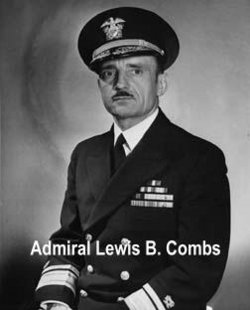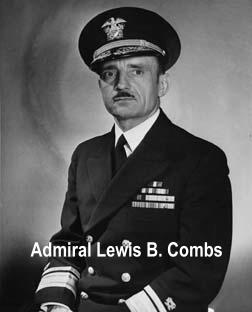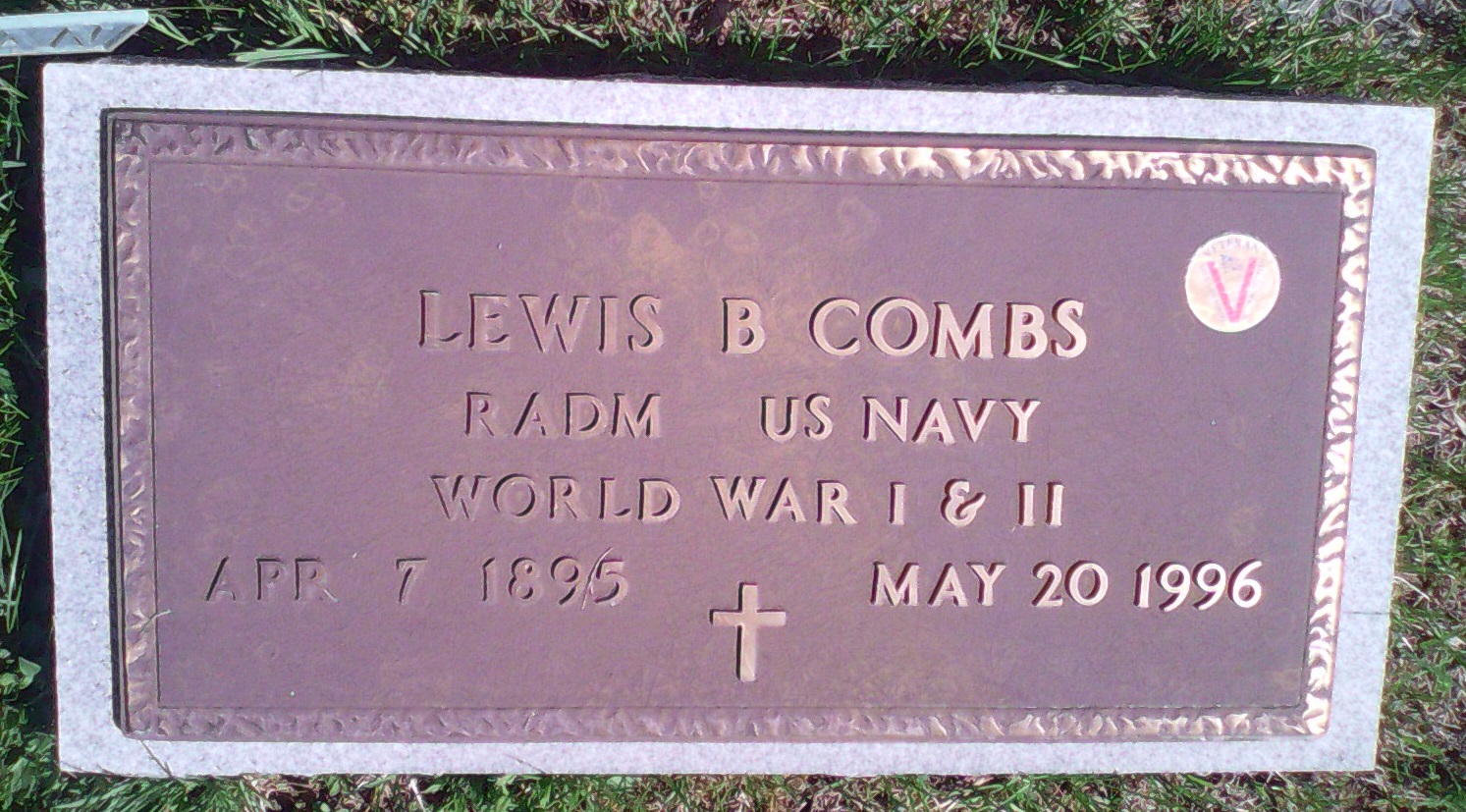Lewis B. Combs, a Navy engineer who helped create and direct the vast island-hopping force of Seabees, who dodged bombs and bullets as they built floating drydocks and airstrips and more across the Pacific during World War II, died on Monday (20 May, 1996) at his home in Red Hook, N.Y. He was 101.
After his retirement from the Navy in 1947 he spent 15 years as head of the civil-engineering department at the Rensselaer Polytechnic Institute.
Building simple warehouses, barracks, storage tanks or even hospitals is not a particularly daunting challenge for a well-trained corps of civil engineers, and laying down elementary airstrips is even easier.
But when a lot of them have to be built in a hurry, say, more than 100 major landing fields and housing for 1.5 million men over a four-year period, the problem begins to become interesting.
And if much of the work has to be done under enemy fire, well, as the Navy quickly figured out at the beginning of World War II, that is a job for the Seabees.
Alas, when those needs and more arose with the bombing of Pearl Harbor on Dec. 7, 1941, the Navy had no Seabees. Fortunately, however, Admiral Combs, the assistant chief of the Navy's Bureau of Yards and Docks, and his boss, Adm. Ben Moreell, had spent four years conceiving, planning and laying the groundwork for just such a mobile construction force.
Within weeks of Pearl Harbor, the Seabees were born, their distinctive name an elaboration and celebration of the initials C.B., as first construction battalions were known.
The very name of their initial base, at Quonset Point, R.I., would soon resonate across the Pacific as Seabee-built Quonset Huts sprang up like forests on island after island, often before the Marines had finished clearing out the last of the Japanese resistance.
For Admiral Combs, a Navy engineer since 1917, there was a personal measure to the sudden, spectacular growth of the Navy's civil-engineering ranks, swollen by hastily drafted civilian engineers, many of them so old that in the early stages of the war their average age was 37.
Before the war, he liked to say, he knew every one of the Navy's 120 civil-engineering officers, by name. Before the war was over his engineering command included 10,000 officers and more than 325,000 men.
Although the Seabees served on six continents, much of their work was done on 300 Pacific islands, following the Marines ashore and beginning their construction of docks, landing strips and other critical facilities while the fighting was still going on.
As the second in command, Admiral Combs spent much of the war in Washington supervising the vast and complex construction and supply effort, but he made many inspection trips to the Pacific, including one that got him a plum assignment after the war.
When John Wayne learned that Admiral Combs, who had served as a technical adviser for the filming of the actor's 1944 movie, "The Fighting Seabees," had landed on a Seabee-repaired Japanese air strip on Iwo Jima while Japanese forces still held much of the island, he used the admiral as a consultant for his 1949 movie "The Sands of Iwo Jima."
By then, Admiral Combs, who finished his long and wide-ranging Naval service in New York as director of the Bureau of Yards and Docks' Atlantic operations, had retired and taken up his duties at Rensselaer Polytechnic Institute, were he had received his civil-engineering degree in 1916.
Even after his retirement from R.P.I. in 1962, Admiral Combs, a native of Manchester, Vt., who grew up in Rensselaer, was a frequent visitor and familiar figure on the campus in Troy, N.Y.
As a walking history resource, Admiral Combs could put both current events and history into perspective. When the American military helped restore President Jean-Bertrand Aristide to office in 1994, Admiral Combs could recall the time 70 years before when he had received a letter of commendation from an earlier Haitian president for his work as an engineer there.
Admiral Combs, whose wife of 71 years, the former Laura B. Warren, died in March, leaves no immediate survivors.
Lewis B. Combs, a Navy engineer who helped create and direct the vast island-hopping force of Seabees, who dodged bombs and bullets as they built floating drydocks and airstrips and more across the Pacific during World War II, died on Monday (20 May, 1996) at his home in Red Hook, N.Y. He was 101.
After his retirement from the Navy in 1947 he spent 15 years as head of the civil-engineering department at the Rensselaer Polytechnic Institute.
Building simple warehouses, barracks, storage tanks or even hospitals is not a particularly daunting challenge for a well-trained corps of civil engineers, and laying down elementary airstrips is even easier.
But when a lot of them have to be built in a hurry, say, more than 100 major landing fields and housing for 1.5 million men over a four-year period, the problem begins to become interesting.
And if much of the work has to be done under enemy fire, well, as the Navy quickly figured out at the beginning of World War II, that is a job for the Seabees.
Alas, when those needs and more arose with the bombing of Pearl Harbor on Dec. 7, 1941, the Navy had no Seabees. Fortunately, however, Admiral Combs, the assistant chief of the Navy's Bureau of Yards and Docks, and his boss, Adm. Ben Moreell, had spent four years conceiving, planning and laying the groundwork for just such a mobile construction force.
Within weeks of Pearl Harbor, the Seabees were born, their distinctive name an elaboration and celebration of the initials C.B., as first construction battalions were known.
The very name of their initial base, at Quonset Point, R.I., would soon resonate across the Pacific as Seabee-built Quonset Huts sprang up like forests on island after island, often before the Marines had finished clearing out the last of the Japanese resistance.
For Admiral Combs, a Navy engineer since 1917, there was a personal measure to the sudden, spectacular growth of the Navy's civil-engineering ranks, swollen by hastily drafted civilian engineers, many of them so old that in the early stages of the war their average age was 37.
Before the war, he liked to say, he knew every one of the Navy's 120 civil-engineering officers, by name. Before the war was over his engineering command included 10,000 officers and more than 325,000 men.
Although the Seabees served on six continents, much of their work was done on 300 Pacific islands, following the Marines ashore and beginning their construction of docks, landing strips and other critical facilities while the fighting was still going on.
As the second in command, Admiral Combs spent much of the war in Washington supervising the vast and complex construction and supply effort, but he made many inspection trips to the Pacific, including one that got him a plum assignment after the war.
When John Wayne learned that Admiral Combs, who had served as a technical adviser for the filming of the actor's 1944 movie, "The Fighting Seabees," had landed on a Seabee-repaired Japanese air strip on Iwo Jima while Japanese forces still held much of the island, he used the admiral as a consultant for his 1949 movie "The Sands of Iwo Jima."
By then, Admiral Combs, who finished his long and wide-ranging Naval service in New York as director of the Bureau of Yards and Docks' Atlantic operations, had retired and taken up his duties at Rensselaer Polytechnic Institute, were he had received his civil-engineering degree in 1916.
Even after his retirement from R.P.I. in 1962, Admiral Combs, a native of Manchester, Vt., who grew up in Rensselaer, was a frequent visitor and familiar figure on the campus in Troy, N.Y.
As a walking history resource, Admiral Combs could put both current events and history into perspective. When the American military helped restore President Jean-Bertrand Aristide to office in 1994, Admiral Combs could recall the time 70 years before when he had received a letter of commendation from an earlier Haitian president for his work as an engineer there.
Admiral Combs, whose wife of 71 years, the former Laura B. Warren, died in March, leaves no immediate survivors.
Sponsored by Ancestry
Advertisement
Advertisement







